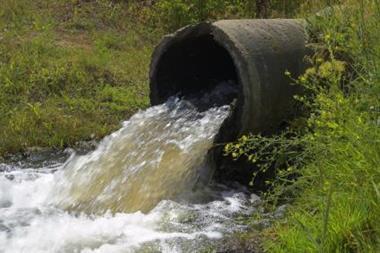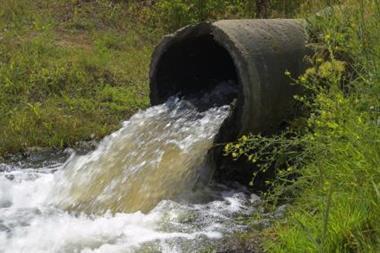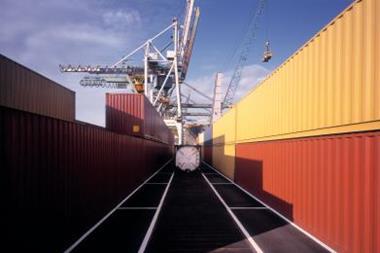Ports and transport facilities suffer badly in windstorms but the experience from major storms like Katrina can provide lessons to reduce future losses. By Ian Lush
While more than 18 months after Hurricane Katrina, a large number of New Orleans' inhabitants remain dispersed across other parts of the United States, but for maritime businesses, for the ports, warehouses, cargo terminals and depots that edge the low lying Gulf of Mexico like a necklace, prospects are brightening.
Despite damage, in some cases massive, international shipping services resumed quickly, and cargo is again priming the pump of economic activity that is the region's heart. The announcement in 2006 by Mediterranean Shipping Company, the world's second largest container operator, that it is introducing 6,000 twenty-foot equivalent unit (teu) ships to boost capacity on its service from North Europe to South Atlantic and Gulf of Mexico ports by 50%, has given a welcome physical and psychological lift to the beleaguered area.
The TT Club is a mutual insurance company that insures liability and property risk for the transport sector. Its members own or operate 70% of the world's container fleet. Three 2005 hurricanes devastated transport operations in parts of the Gulf of Mexico, Florida and the Bahamas in 2005 and left the club with claims from around 20 shipping lines, several port authorities, marine terminal operators and a number of container depots. Gross claims were estimated at $60 million at the end of the financial year, although reinsurance brought the figure down to a much lower level.
The first, and most significant hurricane, was Katrina, which made landfall close to Gulfport, Mississippi, on 28-29 August, causing widespread damage to the port and to the local neighbourhood. The club received notification of 44 claims from ship, port and terminal operator members for a variety of losses including missing or flood damaged containers and chassis, property and handling equipment damage, business interruption and environmental cleanup costs.
On one site visit, adjusters were simply unable to find one building out of the three that had been listed on the policy schedules. In addition to the impact on buildings, there was widespread damage to handling and transport equipment of all kinds, from containers to container stackers, chassis and forklift trucks.
The storm surge generated by Katrina washed hundreds, perhaps thousands, of cargo containers and chassis inland. Their recovery together with that of their contents, where appropriate, was a major task. Many caused damage to property and left liability issues to resolve.
Hurricane Rita, also at times a Category 5 storm, made landfall just east of the border between southwestern Louisiana and southeastern Texas, on 24 September. Rita produced relatively few claims, although the precautionary evacuation of Galveston and Houston caused considerable disruption to the local population and to members' operations in that area.
In late October, Wilma, a third Category 5 storm with a record low pressure for an Atlantic Basin hurricane of 882 millibars, unleashed its force over a 48 hour period upon the Mexican towns of Cozumel and Cancun on the Yucatan peninsula. The container port and cruise terminal in Cozumel both suffered serious damage, before Wilma took off across the Gulf, striking southern Florida and the Bahamas. In total, 16 club members experienced claims for damage to property, handling equipment, containers and chassis.
Access issues
One of the difficulties associated with Katrina and the ensuing storms was the shortage of surveyors and the difficulty in gaining access to the affected areas due to damaged infrastructure and restrictions imposed by the law enforcement authorities to protect the populace and prevent looting. This meant that our appointed surveyors and our own claims staff were unable to assess the full scale of the physical loss and damage and to finalise claims settlements for several months.
Where feasible, and with reinsurers' agreement, we made payments on account to reduce the financial consequences while the losses were being adjusted. Business interruption claims in particular take time to assess. Claims decisions usually depend on the specific nature of the individual policy. The need to determine the exact cause of the interruption also complicates the matter. For example, the treatment of a claim could depend on whether it arose from storm damage to buildings or equipment, or whether it resulted from mandatory or recommended evacuation of staff.
In many cases, too, business interruption encompasses costs and losses continuing up to the moment the business returns to the position it was before the storm. In the case of very severe damage, this could mean months or even years.
Future events
Although things are getting back to normal for maritime businesses in the US Gulf, we can be sure that this will not be the last time insurers are called upon to help policyholders recover from a major natural disaster. In the calm months before the start of next year's season of unpredictable, tropical storms, we need to use our experience to minimise future losses.
We have learned from Korea's typhoon Maemi in 2003, the Frances-Ivan-Jeanne hurricane sequence in 2004 and most recently from the 2005 season that not all windstorms cause the same type of damage, and we have adapted our advice to our members accordingly.
For example, we did not see the defining image from Maemi of toppled quayside container cranes at Busan repeated after Hurricane Frances hit the Bahamas in 2004. Better awareness of recommended equipment tie-down procedures has gone a long way to prevent a repeation.
Nor are windstorms just about wind. The slow moving Frances also deposited a significant volume of water on port craneage, which affected key electrical systems, the destruction of which can be as crippling and costly as the physical collapse of the steelwork as occurred during Maemi. It highlighted the need for terminal operators to properly protect the cabins of their cranes in the path of a storm.
In the light of these experiences, TT Club has produced a windstorm advice booklet designed to help transport operators prepare for and mitigate the effects of such events and distributed it free to members. The advice is equally relevant in locations far distant from tropical weather patterns, as well as terminals located away from the coastline, because windstorms can reach far inland.
Because the possible track and severity of a windstorm become evident some hours or even days before it actually hits, it is possible to take precautions, so we stress the importance of establishing and testing emergency plans.
We have also held seminars on hazardous cargoes, aimed at increasing awareness of the importance of the correct declaration, packing, labelling and stowage of such cargoes in order to avoid accidents both at sea and on land. The risk to personnel and property from leakage of toxic chemicals or fire and explosion of inflammable goods is enormous, as a number of high profile marine casualties in recent years have shown.
The outcome of windstorms and the extent of the damage they cause are always uncertain due to the unpredictability of hurricane paths, intensity and rainfall. However, it is clear that there will continue to be catastrophic storms, not just in the Atlantic and Gulf of Mexico, but also in the Pacific. Any business involved in the maritime supply chain really does need to complete a thorough risk assessment and prepare properly.
Ian Lush is marketing director for the TT Club.
Ian.lush@thomasmiller.com
www.ttclub.com



















